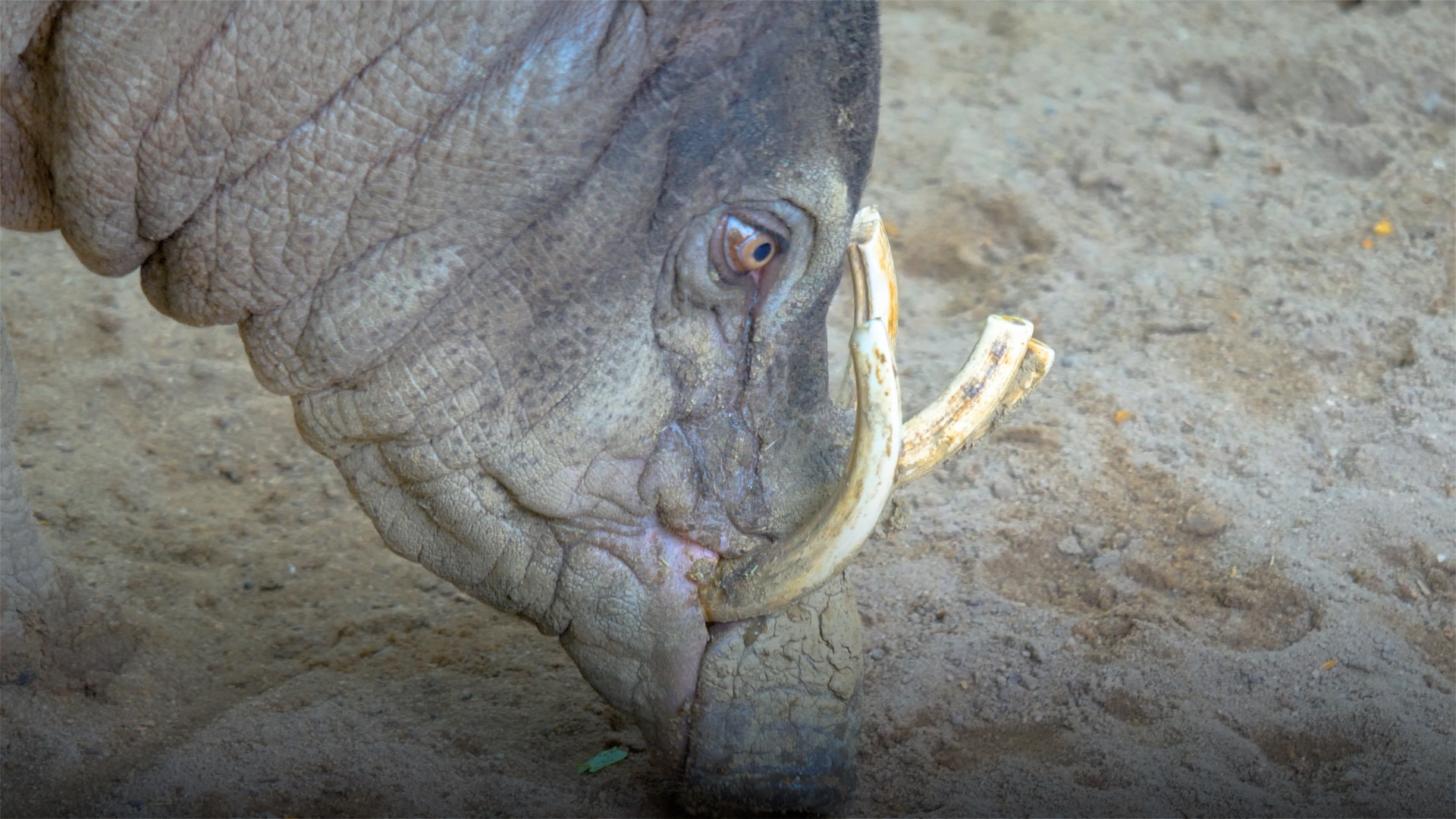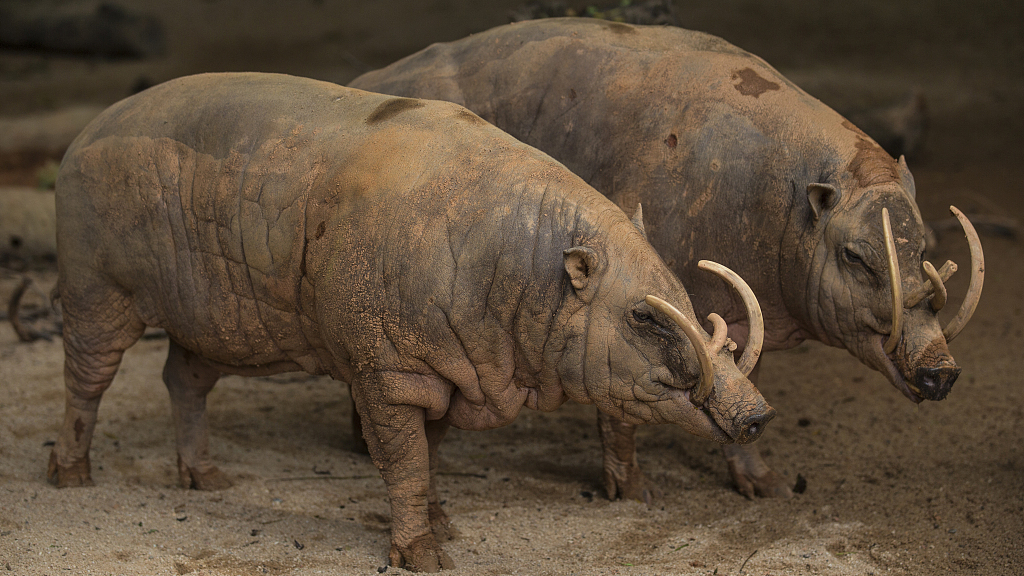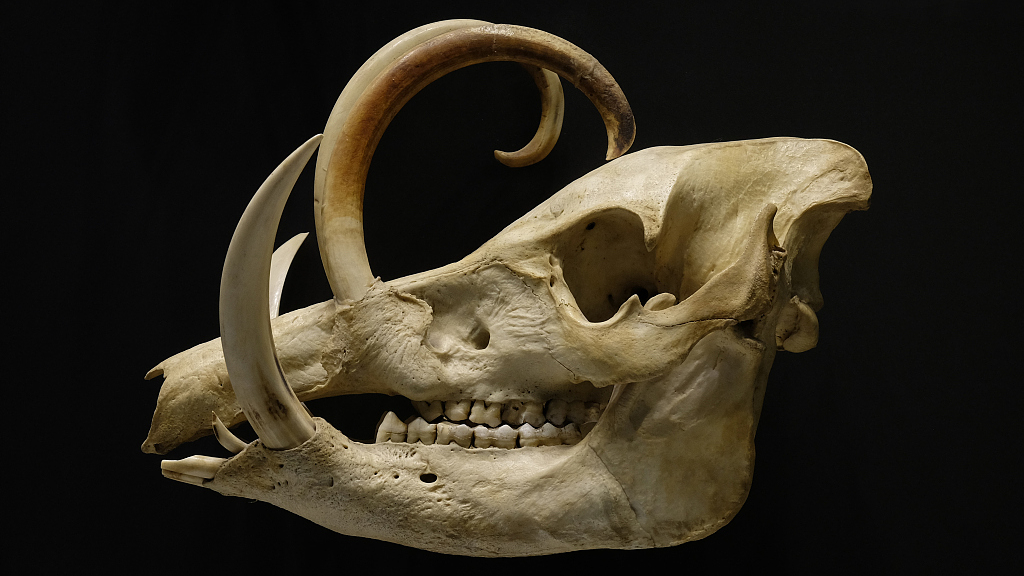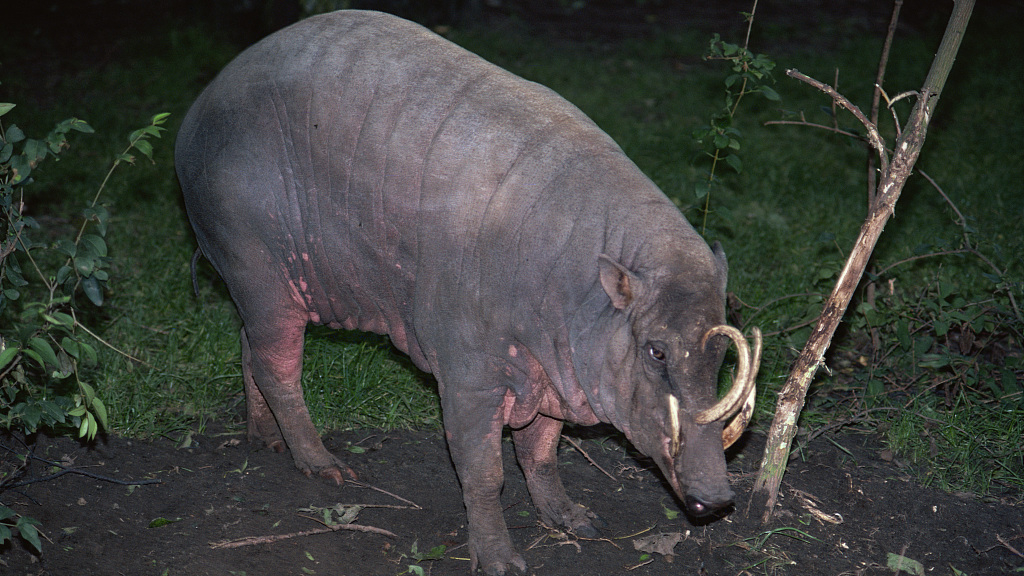00:44

The animal in the video looks like a boar, but no ordinary boar has four tusks protruding from its snout.

The babirusa, or "deer-pig". /VCG Photo
The babirusa, or "deer-pig". /VCG Photo
This is a babirusa or "deer-pig". It belongs to the swine family but looks like a deer with tusks instead of antlers. The mammal is native to a few Indonesian islands.

The deer-pigs look like some prehistoric beasts. /VCG Photo
The deer-pigs look like some prehistoric beasts. /VCG Photo
The tusks give the babirusa a remarkable "prehistoric" appearance. However, only males have prominent canine tusks.
The tusks pierce the flesh of its snout, growing outward and curving backward toward its forehead. The lower canine tusks also grow upward.

A babirusa's skull showing how the tusks grow. /VCG Photo
A babirusa's skull showing how the tusks grow. /VCG Photo
The function of the tusks is fighting. The upper tusks are used for defense, while the lower are offensive weapons.

Sometimes the tusks grow backward. /VCG Photo
Sometimes the tusks grow backward. /VCG Photo
If a babirusa does not grind its tusks, they keep growing to the point where they can enter its own skull.

The upward curving tusks may penetrate the skull if they are not ground down regularly. /VCG Photo
The upward curving tusks may penetrate the skull if they are not ground down regularly. /VCG Photo
Despite its scary appearance, the babirusa is not an aggressive animal. Like other pigs, it mainly eats leaves, roots and fruits.

A close-up of the babirusa and its scary tusks. /VCG Photo
A close-up of the babirusa and its scary tusks. /VCG Photo
One interesting fact about babirusa is, it lacks the bone in its nose, so it never digs the ground with its nose like other swine do.

The babirusa does not have a nasal bone. VCG Photo
The babirusa does not have a nasal bone. VCG Photo
Though many people do not know about the animal, the babirusa is on the brink of extinction. Two of the three species of babirusa are listed as "vulnerable" by International Union for Conservation of Nature (IUCN), while the other one is "endangered" with a small population of 1,000 individuals. Threats include trapping and hunting, and habitat loss caused by logging and other agricultural activities.
(Cover image via VCG)
(If you want to contribute and have specific expertise, please contact us at nature@cgtn.com.)